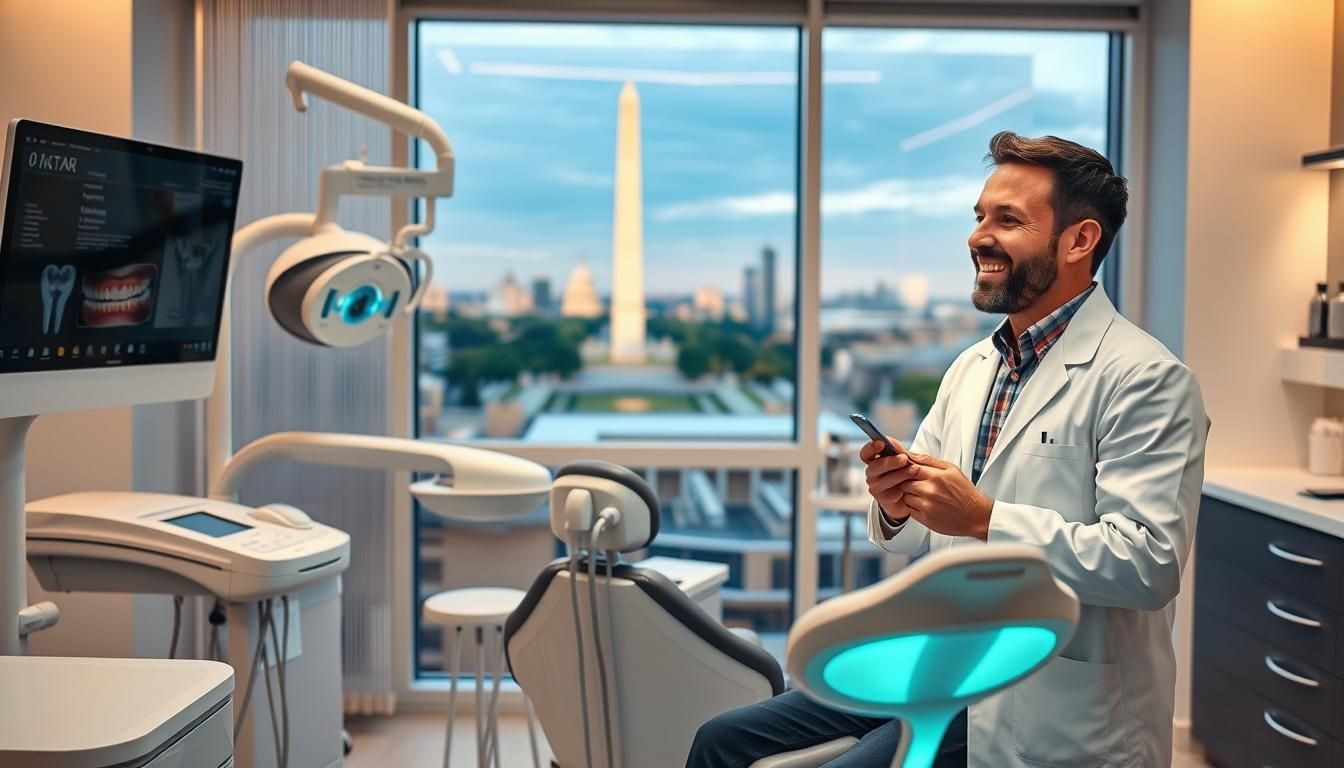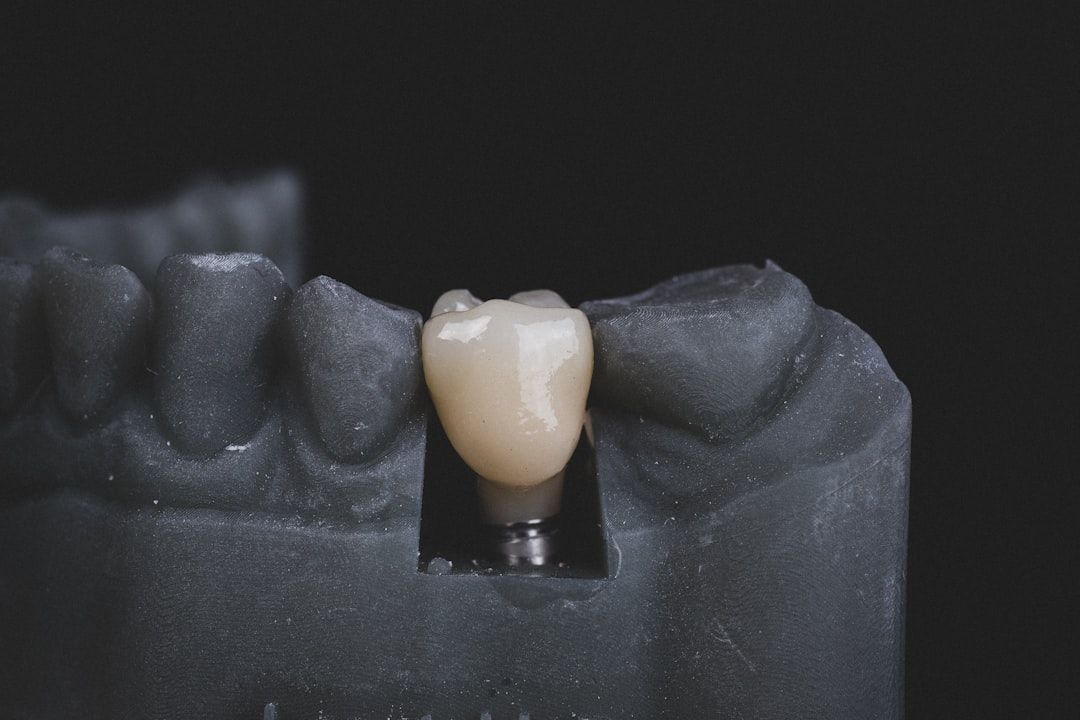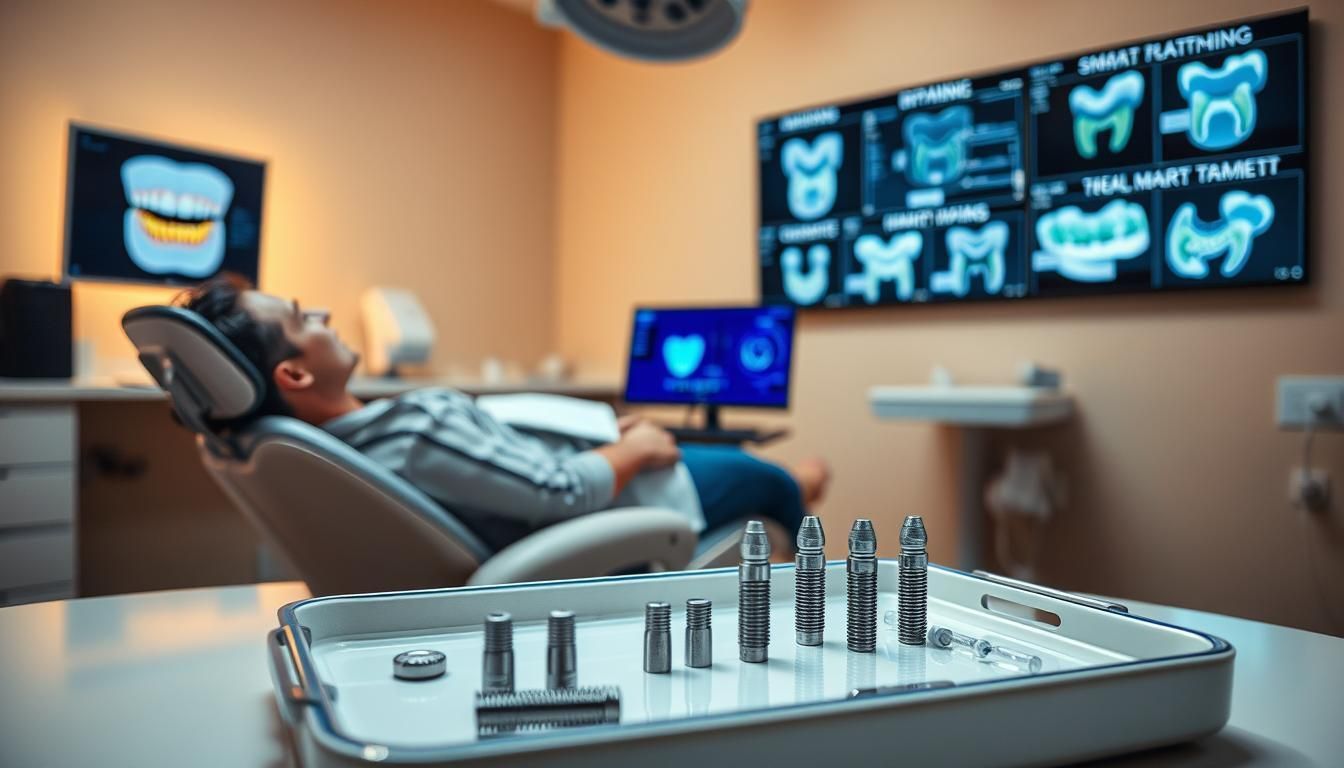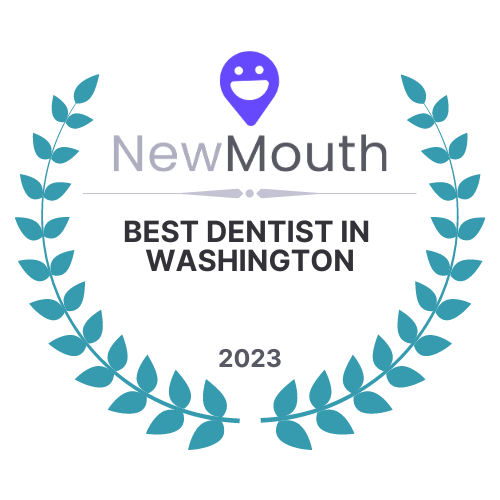New Paragraph
How Long After an Extraction Until I Can Get a Dental Implant?
How Long After an Extraction Until I Can Get a Dental Implant?
Dental implants have a success rate of over 95%. This shows how important timing and care are. If you live in Washington DC, knowing when to get an implant after a tooth extraction is key.
The time it takes to get dental implants after a tooth extraction varies. Your dental health, the tooth's location, and any infections matter. Some can get implants right away, while others must wait months for the site to heal.
At a top Dentist in Washington DC, we carefully check these factors. They decide when the best time is for implant placement.
Key Takeaways
- Dental implants boast a success rate of over 95%.
- Timing for implant placement varies based on health, infection, and tooth position.
- Immediate implant placement is possible for some patients after extraction.
- Waiting several months may be necessary for proper healing in other cases.
- Consult a Washington DC dentist to determine the best timeline for you.

3 Main Timelines for Implant Placement After Extraction
When planning for a dental implant after a tooth extraction, understanding the three primary placement timelines is essential. These timelines — immediate, early, and delayed implant placement — are chosen based on your individual oral health, bone density, gum condition, and the presence of infection.
At DC Implant & Cosmetic Dentistry, our Washington, DC implant specialists perform a full diagnostic evaluation to determine which approach will provide the safest, most effective, and longest-lasting results.
🟢 Immediate Implant Placement (Same-Day Placement)
Immediate placement refers to inserting a dental implant during the same appointment as the extraction.
This approach is ideal for patients with:
- Healthy gum tissue and no active periodontal disease
- Sufficient jawbone volume and density for implant support
- No infection or damage to the surrounding bone
- Good overall oral hygiene and health
- A desire to reduce treatment time and avoid wearing a temporary denture
Benefits:
- Fewer total procedures and appointments
- Preserves bone structure and soft tissue aesthetics
- Shorter overall treatment timeline
- Often paired with socket preservation or bone grafting if minor grafting is needed
🟡 Early Implant Placement (2–3 Months After Extraction)
Early implant placement involves waiting 8 to 12 weeks after tooth extraction to allow for soft tissue healing and inflammation reduction. This method is used when minor infection or trauma is present but bone volume is still sufficient.
Best for patients who:
- Had mild infection or minor bone trauma during extraction
- Need time for gum tissue to stabilize and inflammation to subside
- Want to avoid the higher risks of immediate placement but don’t need extensive grafting
- Prefer a balance between speed and safety
Benefits:
- Reduced risk of implant failure compared to immediate placement
- More predictable healing and esthetic outcomes
- Often avoids the need for a full bone graft
🔴 Delayed or Two-Stage Implant Placement (3–6+ Months After Extraction)
This timeline is used when significant bone loss, infection, or oral health issues are present after the extraction. It typically includes a bone graft or socket preservation procedure, followed by healing and then implant placement.
Recommended for patients with:
- Severe bone loss or thin/soft jawbone requiring augmentation
- Chronic infections at the extraction site
- Periodontal disease history
- Failed previous extractions or traumatic tooth removal
- Health conditions that require additional time for healing
Benefits:
- Allows time for bone grafts to fully integrate
- Provides the strongest foundation for implant stability and longevity
- Reduces risk of implant failure due to unresolved infection or insufficient bone
Expected timeline:
- Bone graft healing: 2–6 months
- Implant placement after graft: 3–6 months
- Final crown after osseointegration: 3–6 months post-implant
Healing After Tooth Extraction: What to Expect
Healing properly after a tooth extraction is crucial — not only to avoid complications but also to prepare your mouth for a future dental implant. Here's a clear breakdown of what most patients in Washington, DC can expect during the recovery process:
🩸 First 24 Hours: Blood Clot Formation
- A blood clot will form in the socket — this is a good sign and essential for healing.
- Mild bleeding, swelling, and discomfort are normal.
- Avoid rinsing, spitting, or using a straw — these actions can dislodge the clot.
- Change gauze pads as directed by your dentist.
🌡️ 24–48 Hours: Peak Swelling and Early Healing
- Swelling and discomfort may peak within 48 hours.
- Apply an ice pack to the outside of your cheek (20 minutes on, 20 minutes off).
- Continue to rest, stay hydrated, and eat soft foods.
🛌 72 Hours: Signs of Progress
- Swelling and pain should begin to decrease.
- The blood clot should remain stable in the socket.
- Any bruising may begin to fade.
🗓️ 7–10 Days: Visible Closure of the Socket
- The extraction site will partially close.
- Stitches (if placed) may start to dissolve or can be removed.
- Most patients can resume normal routines, but still avoid hard, crunchy foods.
⏳ 2–3 Weeks: Deeper Healing Continues
- The gum tissue continues to regenerate beneath the surface.
- You may not feel pain, but internal healing is still in progress.
- It's important to maintain gentle oral hygiene and avoid smoking or vigorous rinsing.
✅ Key Tips for a Smooth Recovery:
- Follow all post-op instructions from your DC implant dentist.
- Don’t skip follow-up appointments — we’ll monitor healing and assess for future implant placement.
- If pain worsens after day 3, or you notice a bad smell or taste, call us immediately — this may be a sign of dry socket or infection.
Will I Need a Bone Graft Before My Implant?
Not everyone needs a bone graft before getting a dental implant, but it's common — especially if the jawbone has weakened after tooth loss. Studies show that up to 50% of implant patients require grafting to ensure a stable foundation.
You may need a bone graft if:
- Your jawbone is too thin or soft
- There’s been significant bone loss after extraction
- You’ve gone months or years without replacing the tooth
⏱️ What to Expect:
- Healing time: 2–3 months before implant placement
- Cost: Typically ranges from $200 to $1,200, depending on graft type and location
- Types of grafts: Autograft, allograft, xenograft, or alloplastic — each with specific benefits
A bone graft strengthens the implant site and increases the long-term success of your restoration.

How Long Until I Receive My Final Crown?
After your dental implant is placed, it typically takes 3 to 6 months before you receive your final crown. This healing period allows for osseointegration — the process where the implant fuses with your jawbone to create a strong, lasting foundation.
🦷 Final Crown Options:
- Traditional crowns: May require a temporary crown and multiple visits
- CEREC same-day crowns: Available at some practices; complete restoration in a single visit
Your final crown is custom-made to match the color, shape, and size of your natural teeth — restoring both function and aesthetics.
💡 Crown Longevity:
- Porcelain crowns: Last 10–15 years
- Gold or zirconia crowns: Can last decades or even a lifetime with proper care
Whether you choose traditional or advanced same-day solutions, your crown will complete your dental implant and help restore your confident smile.
How to Know Which Implant Timeline Is Right for You
Choosing the right dental implant timeline is one of the most important steps in ensuring a successful long-term outcome. Factors such as your gum health, jawbone density, infection status, and the type of extraction all influence the best approach.
At DC Implant & Cosmetic Dentistry, your journey begins with a comprehensive consultation and 3D imaging. This allows us to assess your unique needs and recommend the ideal placement timeline — whether it's immediate, early, or delayed.
The osseointegration process — where the implant fuses with your jawbone — typically takes 3 to 6 months, and proper planning ensures a smoother recovery and optimal implant integration.
Typical Dental Implant Timelines
Below is a quick overview of the three most common dental implant timelines:
This is paragraph text. Click it or hit the Manage Text button to change the font, color, size, format, and more. To set up site-wide paragraph and title styles, go to Site Theme.
| Implant Timeline | Description | Estimated Duration |
|---|---|---|
| Immediate Implant Placement | Implant is placed on the same day as the extraction. | Same day |
| Early Implant Placement | Implant is placed after initial healing of the socket (2–3 months). | 2–3 months |
| Delayed Implant Placement | Implant is placed after full healing or bone grafting (3–6+ months). | 3–6+ months |
Can I Plan My Implant Before My Tooth is Even Removed?
Yes — and in many cases, planning your dental implant before extraction leads to better outcomes. Here’s why early planning is so important:
- ✅ Pre-extraction consultations allow your dentist to assess bone density, gum health, and overall suitability for implant placement.
- 🗓️ You can explore whether you're a candidate for immediate implant placement (same-day as extraction) or if bone grafting will be needed first.
- 📉 Planning ahead can reduce treatment time and minimize the number of appointments required.
- 📋 It gives your dental team time to develop a customized treatment roadmap based on your health and cosmetic goals.
- 🔍 Early preparation helps avoid complications by addressing infections or bone deficiencies in advance.

Frequently Asked Questions
How quickly can you get dental implants after extraction?
In some cases, you can get a dental implant immediately after extraction — known as same-day implant placement. However, this depends on the condition of your gums and jawbone. If there’s infection or bone loss, you may need to wait 2 to 6 months for healing before placement.
Can you extract a tooth and put an implant in the same day?
Yes, this is called immediate implant placement. It's often recommended for patients with healthy bone density and no infection at the extraction site. This approach can shorten the overall treatment timeline and preserve gum and bone structure.
How long do you go without teeth when getting implants?
If you're not a candidate for immediate implants, you'll typically wait 2–6 months before the final crown is placed. During this time, many patients are given temporary solutions like a healing denture or temporary crown to maintain appearance and function.
What is the 3/2 rule for dental implants?
The 3/2 rule is a guideline that suggests the implant should be at least 3 mm in diameter and surrounded by at least 2 mm of bone on all sides. This helps ensure proper support and long-term implant success.
Can I get an implant 2 years after extraction?
Yes, you can still get a dental implant even years after tooth loss. However, the longer you wait, the more likely you’ll need a bone graft due to bone resorption. A consultation with a dental implant specialist can assess your readiness.
Do you get temporary teeth while waiting for implants?
Yes. Patients often receive temporary solutions like:
- Removable partial dentures
- Temporary bridges
- Flipper teeth
- Immediate temporary crowns (in some cases)
These maintain aesthetics and function until your final restoration is placed.
Can you put a dental implant after extraction?
Absolutely. Whether it's immediate, early, or delayed placement, implants can be placed after tooth extraction depending on the healing status of your gums and bone. Your dentist will guide the best timeline based on a full exam.
Why do you have to wait 3 months for dental implants?
Waiting allows for proper healing of the gum tissue and regeneration of bone in the extraction site. It also reduces the risk of infection and improves the success of osseointegration — the process where the implant fuses with the jawbone.
Why not replace teeth with implants?
There are some cases where implants may not be ideal, such as:
- Severe bone loss without grafting
- Medical conditions that impair healing
- Poor oral hygiene or active gum disease
In these cases, bridges or dentures may be recommended instead.
What is the downside to dental implants?
While dental implants are highly successful, potential downsides include:
- Higher upfront cost than other options
- Minor surgery required
- Risk of infection or implant failure (rare with proper care)
- Healing time may extend the total treatment timeline
Does insurance cover dental implants?
Coverage varies. Many dental insurance plans do not cover implants, though some may pay for portions like exams, extractions, or crowns. Medical insurance may offer partial coverage if the implant is medically necessary. Always check with your provider.
Is there a cheaper alternative to dental implants?
Yes. Lower-cost alternatives include:
- Removable partial dentures
- Dental bridges
These options don’t require surgery and can often be completed faster, but they don’t preserve bone health the way implants do.
Why Choose DC Implant & Cosmetic Dentistry in Washington, DC?
Located in the heart of Northwest DC, DC Implant & Cosmetic Dentistry offers advanced dental implant solutions at their state-of-the-art facility at 4444 Connecticut Ave NW #106, Washington, DC.
Here’s why patients across the region trust us with their smile:
- 🦷 Expert Implant Care: Our experienced team uses the latest technology to deliver precise, long-lasting dental implant results — from single-tooth replacements to full mouth restorations.
- 🏥 Modern, Comfortable Office: Enjoy personalized care in a welcoming, high-tech environment designed with patient comfort in mind.
- 🌐 Full-Service Dentistry: In addition to implants, we offer cosmetic, restorative, and preventive dental care, all under one roof.
- 💬 Trusted by Locals: Known for our compassionate approach and consistent 5-star reviews, we’re proud to serve patients from Washington, DC and the surrounding communities.
DC Implant & Cosmetic Dentistry
Address: 4444 Connecticut Ave NW #106, Washington, DC 20008
Phone: (202) 540-1911



